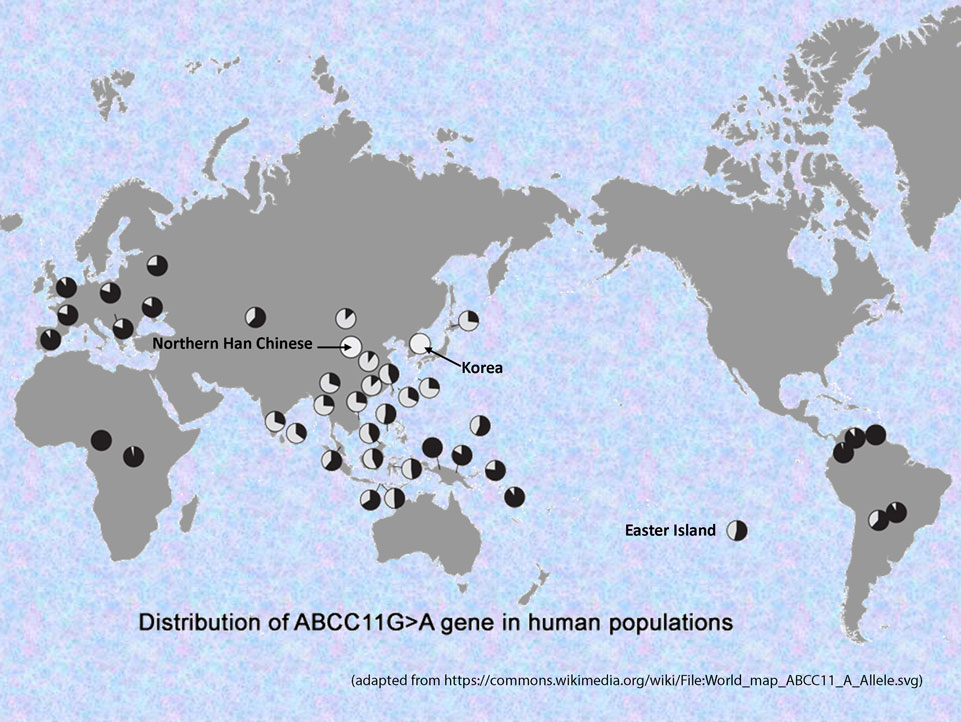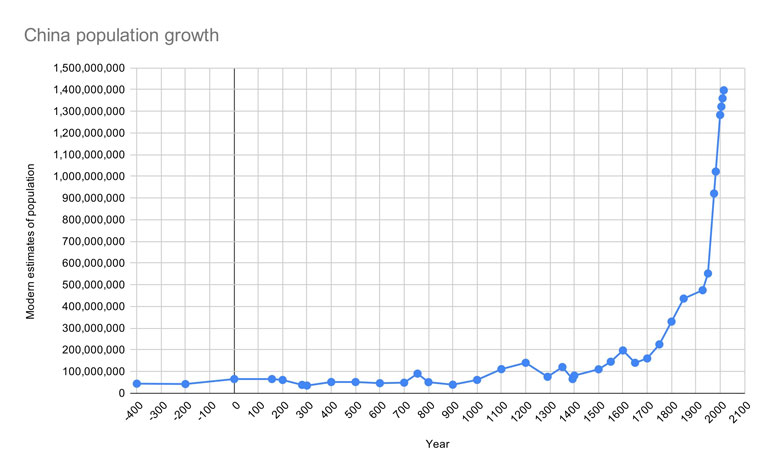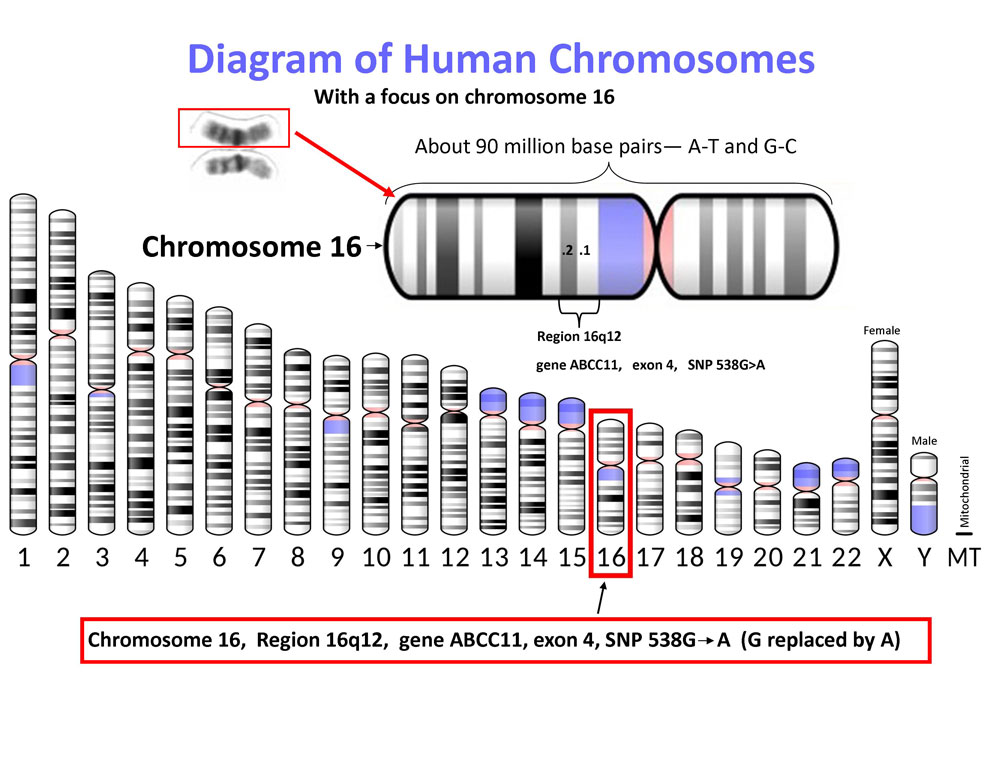The Great Wall of China
Built to Keep the Stink Out.
Who were the Wu Hu?
The Wu Hu (五胡 =five barbarians; Chinese: 五 = the number 5; 胡 pronounced “hu” = barbarians; pinyin: Wǔ Hú) were five tribes of ancient non-Chinese people who migrated to the north of where the Han people settled in Eastern Asia. The Han, who settled in the fertile valley along the Yellow River, are the ancestors of modern Chinese people.
The five tribes were the Xiongnu, Jie, Xianbei, Quang, and Di. Another nomadic tribe called Hu by the Han Chinese, were the Donghu (東 “east” 胡 “Hu,” pinyin: Dōnghú). These were the people living just northeast of the Han Dynasty.
The Xiongnu were by far the dominant tribe. Over the course of 400 years starting around 300 BC, they harassed the emerging Han Chinese culture along the Yellow River.
See the map for their approximate locations.
Besides being illiterate nomads prone to warfare and pillage, the Hu people had one thing in common. They had dreadful body odor, which did not go unnoticed and chronicled by the relatively odor-free and literate Han Chinese.
Just so there is no confusion about how terrible their body odor was, imagine a crowded New York subway in the summer, everybody on their way home at the end of a hard workday. Same stink.
Map of Ancient Asia ca. 200 BC
Chinese Words for Body Odor
Sun Simiao (581-682) was a famous doctor during the Tang Dynasty. His extensive writings survive to this day. He regarded body odor as an illness because his healthy Han Chinese patients didn’t have armpit odor.
The term “hu stinky” mentioned in Chinese history can be traced back to Sun Simiao’s “Prescription for Emergencies.” He wrote (in ancient Chinese of course), “Those who are born with stinky hus are dyed with stinky Hu”, which means that people with Hu stink are that way because of the ancestry of the Hu people.
孫思邈的【備急千金要方】“有天生胡臭者,為人所染胡臭者“,意思是指有胡臭的人是因為有胡人血統。
A traditional word for body odor for centuries has been 胡氣味 (Hu Smell). Another term for body odor is 狐臭 (Fox Stink). It has been speculated that the ancient people compared the strong body odor of unwashed humans to the odor of wild fox urine. Among Chinese people who are not overly concerned with being politically correct, both Húchòu (fox stink, AKA body odor) and Hú qìwèi (Hu smell) are used to describe stinky armpits.
In the face of world-wide political correctness, the word 體 味 (pinyin: Tǐwèi) is now being advocated for “body odor,” because the word 味 (pinyin: Wèi) also means the much gentler term: taste or flavor.
The Gene for Stinky Armpits
The wild version of a gene called ABCC11 is what gives people wet ear wax and armpit secretions that bacteria use to make them stink.
Who has the wild gene? Everybody except the descendants of people who have the mutation. Because it is a recessive gene, having only one copy of the mutation doesn’t have much effect. If you have the wild gene, even one copy, you know it!
Tracing back 3,600 years in time, Japanese, Koreans, and Han Chinese had common ancestors. Those ancestors appear to be descended from people who inherited the mutation, possibly as long as 40,000 years ago. Somehow most of them received two copies of the variation called an allele.
An “allele” is an alternate form of a gene. Each individual receives one copy of each allele from each parent. Thus people who have two copies of the “A” allele of the ABCC11G>A are said to be homozygous for the A allele. We will simply refer to homozygous people as “AA.” They don’t stink. People who get one A and one G may not stink quite as badly as someone with GG, but that’s hard to prove.
In the map below, AA people are shown in white. It’s most common in Korea, China, Mongolia, and western Japan.
Distribution of ABCC11 Alleles in Select Populations
White portion of each circle denotes frequency of allele A.

It is an unusual mutation because the single human trait of having dry ear wax and being fresh as a daisy (or not) is controlled by just one non-functioning gene, rendered non-functional by a single nucleotide polymorphism (SNP), where a single molecule of guanine (G) got substituted out by one adenine (A).
The molecules adenine (A), thymine (T), guanine (G), and cytosine (C) are called base pairs. A pairs with T and C pairs with G in the double helix of DNA, which holds the code to all life.
In geneticist jargon, a “SNP” is unsurprisingly called a “snip.” SNP 538G>A means the change from guanine to arginine happened at a location denoted by the number 538. A more recent convention calls it (rs17822931) making it easier to access open source genetic libraries that use the rs…. numbers.
The notation rs17822931-A is the non-stinky allele. It takes two copies for an AA person.
Anthropological Research
Anthropologists can use the mutation in the ABCC11 gene to trace how humans migrated around the world after incubating the mutation in a sufficiently small and isolated population for a long time. It’s hypothesized to have occurred around 40,000 years ago in Asia. (Toshihisa Ishikawa et al.)
In order to pass it on, it was a germline mutation, which means it happened to the cells that become sperm or eggs.
Since writing hadn’t been invented yet, there is no record of when people first noticed that they didn’t stink. We are left to guessing what happened. Even 40,000 years is a guess. But there are smart people who know how it happened:
“Evolution begins as one mutation, on one chromosome, in one individual.”
Hahn, Mathew William, “Molecular Population G
From One to One Billion
Let’s imagine how that one mutation, on one chromosome, in one individual was able to survive to become what arguably could be a billion Chinese and Korean people who don’t need deodorant. Unfortunately the answer may be found in the complicated mathematics of population genetics or the uncertain speculations of anthropologists. Nevertheless we will take a guess because ABCC11 is our favorite gene.
The mutation happened on a germ cell that developed into an egg in a woman or or sperm cell in a man.
It might spread faster in the population if the mutation was in a germ cell (spermatogonia) of a young boy so he would have a longer time to spread his good luck around. As he aged, he may have become the leader or alpha male, although there is evidence that some tribes in ancient China may have been matriarchal. Nevertheless the chief matriarch may have been the boy’s (man’s) mother. You can imagine how that might work.
Now we need to separate ourselves from ideas about inbreeding and appropriate age for childbearing.
We can speculate about infant mortality, mortality of mothers, and a relatively short lifespan past childbearing age. It doesn’t matter considering the long time that allowed the mutation to become dominant. The important thing is the population remained relatively small and isolated.
From 40,000 years ago until 10,000 years ago people in Asia were hunter-gatherers. Life was short and brutal. Populations did not increase quickly. Rs17822931-A must have quietly incubated, first in one small tribe, and then expanding as the population increased and clans separated from their original groups.
How Did rs17822931-A Survive the Genetic Lottery?
The short answer is “it’s harmless.”
A longer answer is found in a paper published in 2010 by Jun Ohashi, Izumi Naka, and Naoyuki Tsuchiya. More about that later.
When you look up the SNP on a database, you will see the alleles classified as C>G / C>T . This is because in the chromosomes, A pairs with T and G pairs with C.
When you see the SNP written rs17822931(T;T), it means that the person has two copies of the gene that gives most Asians dry ear wax. Ear wax helps to protect the ear canal from infection.
We mention the alternate notation in case you want to research ear wax for yourself.
To see if dry or wet ear wax results in more or less external ear infections, we looked at data from several countries.
In Nigeria (wet ear wax), being Christian correlated with more external ear infections. Read about it HERE.
Studies from the Netherlands (wet) and the United Kingdom (wet) have shown an annual incidence of about 1% that increased five-fold in swimmers; so it’s called “swimmer’s ear.”
Most references were concerned about causes of external ear infection; none differentiated between dry and wet ear wax.
Doctor Zou Daowand in China reports a lifetime prevalence of 10%. The incidence of otitis externa is the highest in middle and late summer of the year, especially among people aged 5-19. Doctor Zou, like most other references we found cited data consistent with western sources. He may have gone to medical school in the West.
The 10% lifetime prevalence and universal concern about swimmers ear points to little or no worldwide difference in the incidence of outer ear infections between AA people and GG people.
We conclude, as did Ohashi, Naka, Tsuchiya that dry ear wax, and less sweat in a cold climate didn’t give the rs17822931-A mutation any great selective advantage.
We thank them for telling us that the mutation is 2,006 generations old because we are too stupid to do the math ourselves. The math says that without some selective advantage, rs17822931-A should be 10,038 generations old. Assuming a generation is 20 years, that would put the rs17822931-A mutation at over 200,000 years ago – far too long.
Archeologist are pretty sure it’s around 40,000 years ago, which is consistent with 2,006 generations. Therefore there is either some yet to be identified selective advantage, or there was something else that allowed the gene to spread so quickly.
We think it was the wall- and a bunch of stuff like a wall.
How the Wall Preserved the ABCC11G>A Gene
The beginning of the Great Walls can be traced to around 800 BC. The early walls were mud ramparts designed to keep the the local neighbors out. Barbed wire had to wait more than 2,000 years to be invented.
The rs17822931-A mutation happened around 40,000 years ago but it’s reasonable to assume that it spread slowly in very small hunter-gatherer bands for thousands of years before the agricultural revolution gave people the security they needed to stay on one spot.
During the hunter-gatherer time, rs17822931 was random AA, AG, and GG. It didn’t go too far out of Asia. It may have lived in isolated mountain passes without too much pressure from competing hominids like Neanderthal or Denisovans
There may have been a slight selective preference for people to breed with less stinky people, but that may also be our modern bias to imagine that stink is not attractive.
Finally people learned how to grow their own food. The went where the good land and rivers were, the Yellow River system and China’s longest river, the Yangtze.
Agriculture in China
Archeologist point to a time between 12,500 BC and 9,000 BC as the beginning of agriculture in Northeast China, the North China Plains, and the Middle and Lower Yangtze River basins. There they began to cultivate grains like rice and millet.
Individual communities had small populations that their land would support. They tried to keep outsiders away to preserve their food. Doing so also preserved their genetic pool. If they did take in an outsider, it would likely be from a neighboring community. That way they didn’t become too badly inbred while unknowingly preserving their ABCC11G>A allele.
Just to be clear, ancient China was not a happy place where peasant farmers peacefully tilled their land and made babies. Taking in outsiders frequently meant taking slaves or the peasants themselves were carried away as slaves.
In order to grow a large population, something was missing – a government.
The Rise of Dynasties
Among the hard working farmers and slaves there were families of smart people who didn’t want to work for a living. They cleverly figured out how to become the rulers and make everybody else work to support their important administrative functions, like defending the people and waging war.
Smaller regional dynasties coalesced by force or otherwise and eventually became seven larger states under the rule of even more powerful families.
 Fighting among the seven major states is known as the Waring States Period. The states were Qin, Han, Wei, Zhao, Qi, Chu, and Yan.
Fighting among the seven major states is known as the Waring States Period. The states were Qin, Han, Wei, Zhao, Qi, Chu, and Yan.
The wars themselves may have helped to save the AA gene. Late in the Seven States Period (around 278 BC), Qin drove the Chu far to the east of their territory where they took on many local customs and presumably genes. Then about 50 years later after mounting battles of more than a million men, the Chu state was destroyed. No one can guess how many non-A genes were killed.
The Qin State’s victory in 221 BC marked an end to the Waring States Period. Qin pronounce “Chin” is how China got its name. History is fascinating, but not as fascinating as genetics, which is our modern key to history.
The first emperor of a unified China, Qin Shi Huang (秦始皇) ordered the destruction of all the walls between the feudal states that he conquered. Then he focused on building walls to connect and fortify the defenses to the north.
What Qin Shi Huang started would eventually become a 13,000+ mile wall across the northern border to keep out the ancient Dōnghú (东胡), Xīhú (西胡) and all the other Hu, non-Han Chinese.
Qin Shi Huang didn’t survive very long, nor did his children who briefly ruled a kingdom in revolt.
Following Qin, the Western Han and later the Eastern Han established a dynasty that would last 400 years (202 BC – 220 AD) and take China to new cultural heights.
Based on the current map of rs17822931-A, the mutation was concentrated among the Han Chinese. Their efforts at empire building helped the mutation flourish in the growing population.
The Han were highly literate rulers who kept meticulous written records of their achievements. They promoted cultural achievement among their huge cadre of public servents.
They invented hemp paper, water clocks, sundials, created calendars, and made advancements in science including a blast furnace to make cast iron and steel. Other achievements include tools like the adjustable wrench, wheelbarrow, moldboard plow, stirrups on riding saddles, rudders on ships, and even a seismoscope to detect the direction of distant earthquakes.
The Han Dynasty presided over an era of prosperity that allowed it to finance large armies for both self-defense and conquest of new territory.
The Great Wall of the Han Dynasty was mostly built by 121 BC, in order to defend against the Xiongnu whom they eventually defeated. It was also extended to defend sections of the Silk Road far into the Gobi desert. In the east, they extended the wall close to northern Korea, which they conquered in 109-108 BC.
The Tang dynasty (618-907) built a few sections of wall in its early years but later they relied on a huge army for defense. Of all the dynasties run by ethnic Han Chinese people, the Tang dynasty most effectively used their forces to expand territory far beyond the Great Wall.
The Great Wall as we now know it was rebuilt during a period of one hundred years during the Ming Dynasty (1368-1644). It was breached in 1644 by a coalition army led by Manchus. The Manchu Army quickly established control over all of China. Called the Qing dynasty, it ruled until 1912.
Walls Preserved the Culture
Walls posed a formidable barrier against the cavalry and foot soldier warfare prevailing since Neolithic times.
Besides protecting peoples’ lives and their property, defensive walls protected the emerging culture and all that it entails: language, writing, science, art, beliefs, laws, food, and traditions, to name a few.
The Wall helped protect the culture; the culture promoted prosperity including food production; food promots reproduction.
Somebody in the Zhou Dynasties (1027 BC – 221 BC) came up with a clever idea. They called it tiānmìng (天命), Mandate of Heaven. In China the idea persisted for a long time because a successful revolution against a current ruler was seen as a sign that heaven approved of the change.
The idea that a heavenly power gave the ruler his legitimacy is the same as the Divine Right of Kings that held sway in Europe until England’s Glorious Revolution (1688-1689) and the French Revolution (1789). It persists to this day in Iran, ruled by blood thirsty clerics. Iranian Mullahs are using clerical authority to preserve a culture whose time has passed.
Walls No Longer Necessary
Chinese and North Koreans no longer rely on walls to keep them safe, to keep people out, or to preserve their mutation. They have armies, laws, police, and nuclear wepons.
The only immigrants into China are usually ethnic Chinese returning to China.
They know about genetics, who stinks, and who doesn’t stink. There are a lot of GG Chinese and they don’t stink because they bathe and use deodorant, just like the rest of the world. Still there is a huge number of AA Chinese. With no more wall, it’s up to them to decide if the mutation is worth preserving.




